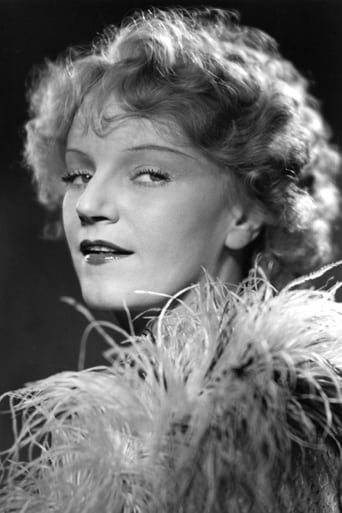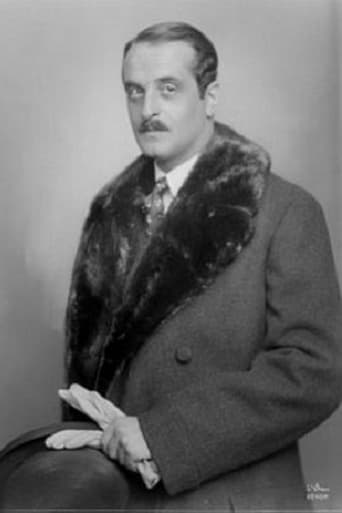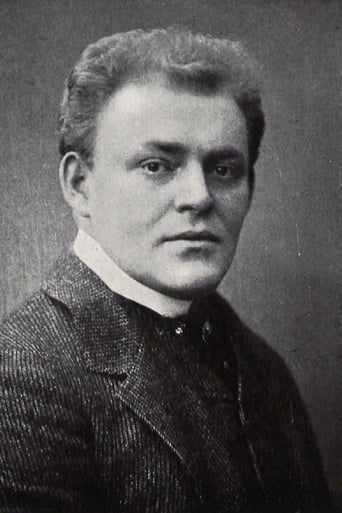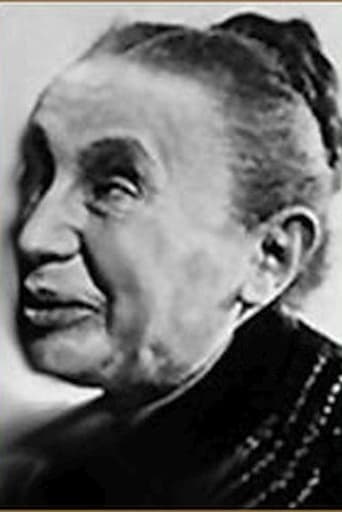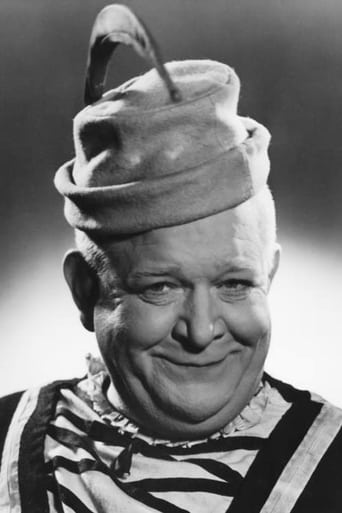Maidgethma
Wonderfully offbeat film!
Afouotos
Although it has its amusing moments, in eneral the plot does not convince.
TaryBiggBall
It was OK. I don't see why everyone loves it so much. It wasn't very smart or deep or well-directed.
Zandra
The movie turns out to be a little better than the average. Starting from a romantic formula often seen in the cinema, it ends in the most predictable (and somewhat bland) way.
ofpsmith
The interesting thing about The Last Laugh is that it was shot without dialog cards. We never hear (or read) what the characters are saying. That distinction goes to how we see the characters react. The story is also really good and you really end up feeling sorry for the hotel doorman (Emil Jannings). He's didn't do anything but it's all based on a misunderstanding. And he therefore is demoted. FW Murnau really knew how to tell a emotional film, as we can see here. Emotion is the only thing that drives this movie. All the parts of the movie can be seen on the character's face. We don't need cue cards for this movie. If you're interested in Murnau or how he did this than check it out.
G K
The film is among the finest achievements of the silent cinema. The old doorman (Emil Jannings) of a luxury hotel is demoted to the job of lavatory attendant, but comes into a fortune and gets his revenge.The Last Laugh is an ironic silent anecdote, made important by its virtual abandonment of dialogue and the whole-hearted adoption of a freewheeling camera technique which gives some thrilling dramatic effects. The film is the most famous example of the short-lived Kammerspiel or "chamber-drama" genre. The set was built entirely within a studio, unusual for director F.W. Murnau, who preferred to shoot on location.
JoeytheBrit
In 1920s Germany, a hotel doorman takes great pride in both his job and the grand uniform that denotes his position. The uniform earns him the unquestioning respect of his neighbours, so when he is demoted through no fault of his own to the lowly position of lavatory attendant, the doorman is devastated. Stealing the uniform that once was his, he makes a sad attempt to fool his neighbours into thinking he still manages the door of the prestigious Atlantic Hotel but, before long, the truth is uncovered, and the respect they once paid him quickly dissolves.The Last Laugh stands as one of the finest creations of a remarkable director, F.W. Murnau, whose credits include Nosferatu, Faust and Sunrise. Filmed without use of subtitles – and to appreciate what an astounding achievement this is, try imagining a dramatic film made without any form of dialogue today – Murnau crafts a beautiful, compelling and tragic tale that stands as both testimony to his undoubted skills and to the artistic heights to which silent cinema often aspired.The venerated German actor Emil Jannings was only 40 when he took on the role of the unnamed porter, and yet a combination of Waldemar Jabs painstaking make-up and Jannings' own ability to convey his character's heartache in simple ways, such as the stoop of his shoulders or a bent leg, means he gives a towering performance that never threatens, however, to overshadow the story being told.The story revolves as much around the grandiose uniform Jannings wears as it does the man. A symbol of the contemporary German importance attached to uniforms and their unavoidably militaristic connotations, the uniform is portrayed as making the man – and it is only the contentious ending that spins the message that it is not uniforms but compassion and kindness that make men great – not only through the respect he receives from all around him, but in the transformation the porter undergoes whenever he is parted from it. From a ramrod-backed creature of magnificence, with elaborately arranged hair and whiskers, he turns into a fumbling old man with bowed back and shaking hands. In the hands of a lesser actor, the demands of this transformation may have descended into cheap caricature, but Jannings never lets us lose sight of the proud man lurking within the bowed and beaten body.Karl Freund's camera-work is a revelation in this film, right from the opening shot as we descend with the lift into the foyer of the opulent Atlantic hotel. Numerous tricks are used without drawing attention to their use and thus distracting the viewer from the tragedy that is taking place: the drunken POV shot (achieved by strapping the camera to Freund's chest) in Jannings' flat after his niece's wedding reception; the blurred fantasy sequences (themselves a breakthrough in film narrative) achieved by smearing Vaseline onto the camera lens, and the use of dialectic montage and dolly shots, were all groundbreaking techniques never before used, but copied forevermore.Murnau directs the film with the assurance of a man at the top of his form – where he would arguably remain until his tragically early death – and the care taken with this film is evident throughout every shot. This is why Murnau made relatively few films in an era when many directors churned them out at a rate of a dozen or more per year. The degree of a director's conscientiousness is always evident on the screen, and it is always a pleasure to view a Murnau film, because it is clear that his commitment to his work was always second to none.
funkyfry
From the very first shots of this movie, my friend and I were just in awe of the way Murnau uses the camera to set up his situation. There's an intimacy to it, he brings us close to the characters. Also the way he uses the angles and straight lines of the windows, doors and buildings to frame his shots impresses us immediately with the dehumanizing nature of the city much as it did in his Oscar Winning American film "Sunrise: A Song of Two Humans." As if the impressive direction and photography weren't enough to distinguish this as one of the most impressive films I've seen from the early 20s, the whole affair is anchored by a brilliant performance from Emil Jannings. He plays a man who is retired from his position as a hotel doorman and demoted to the washroom, which leads to a sort of nervous breakdown imaginatively filmed and a fetishistic attachment to the uniform of his former office.This isn't a plot heavy film or a drama heavy film, basically it's a character study. It's remarkable for the fact that there are no dialog title cards, and only 2 or 3 informational title cards relating to various events and anchored to specific informational devices interior to the film (e.g. we see the boss' letter telling him of his demotion). The quality of the acting not only from Jannings but from the entire cast (perhaps with the exception of a broadly played gossip woman) we see very natural performances that you often don't in silent films.Of the 3 films I've seen by Murnau, this film impressed me the most. It doesn't have the melodramatic elements that make "Sunrise" a bit more predictable, and it doesn't have the languid pace that slows "Nosferatu" for me. It reminds me in some ways of the films I've seen from the 30s by Jean Renoir -- there's this fantastic way that the camera follow the actors around on the streets, pulling ahead of them momentarily and then allowing the main actor to zip through the frame while it focuses on incidental details. I'm thinking specifically of the scene where Jannings escapes after stealing back the uniform, but there are several scenes along these lines.Essentially I saw this film as a message of hope, interestingly couched with an explanation from the film-makers that "in reality" it would not have ended happily. It's too easy to see this card, one of as I said only 2 or 3 in the entire film and the only one that's not tied to a specific device, as Murnau's way of eating his cake and having it too. Is there a touch of the ending from this movie, with the two former bums riding off together, that comes to mind when you see Wilder's "Some Like It Hot"? Or has this been filtered by way of Mssrs. Lubitsch and Renoir et al? Either way I would describe the movie overall as purely cinematic, miles and miles beyond normal film-making techniques and taste of the early 20s and even arguably of today.


